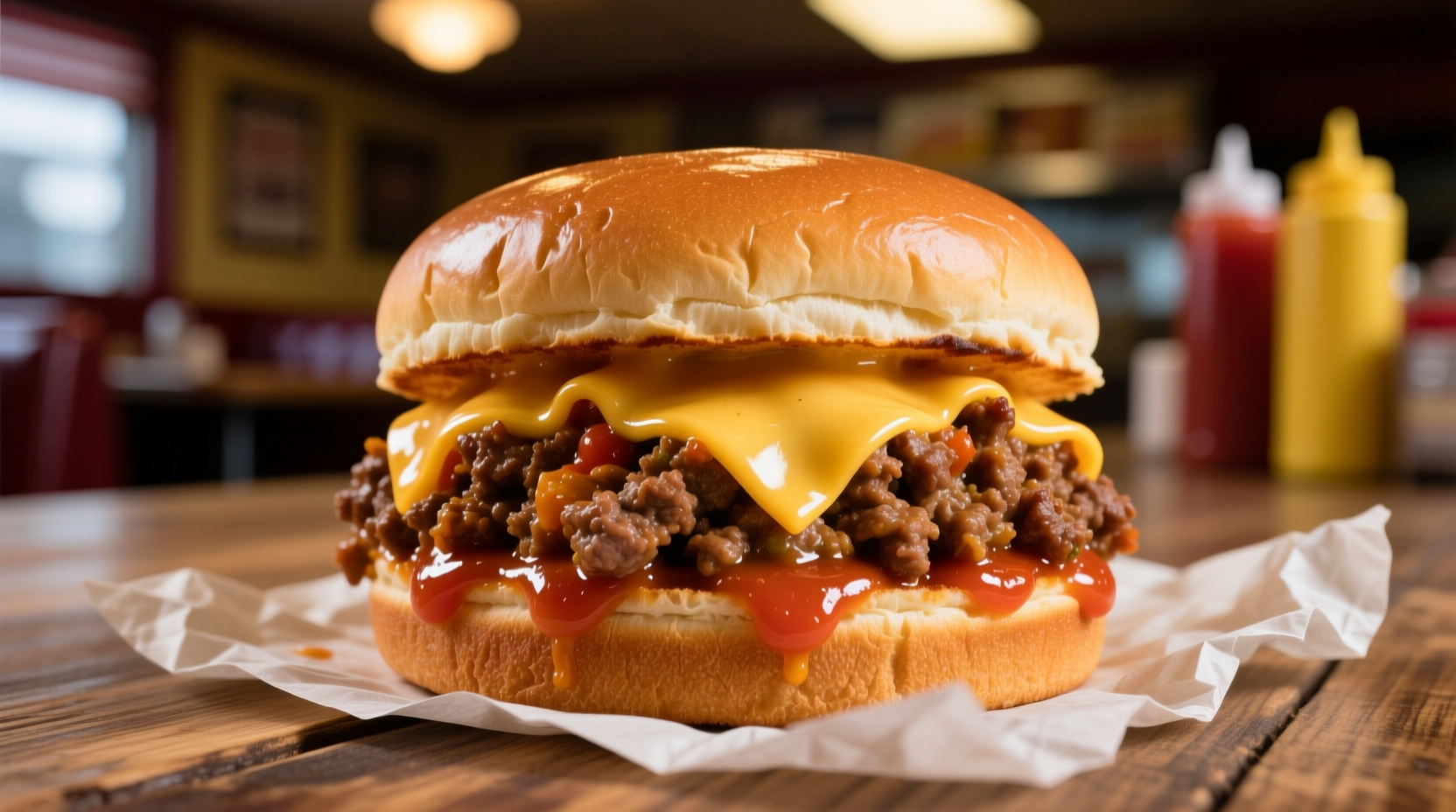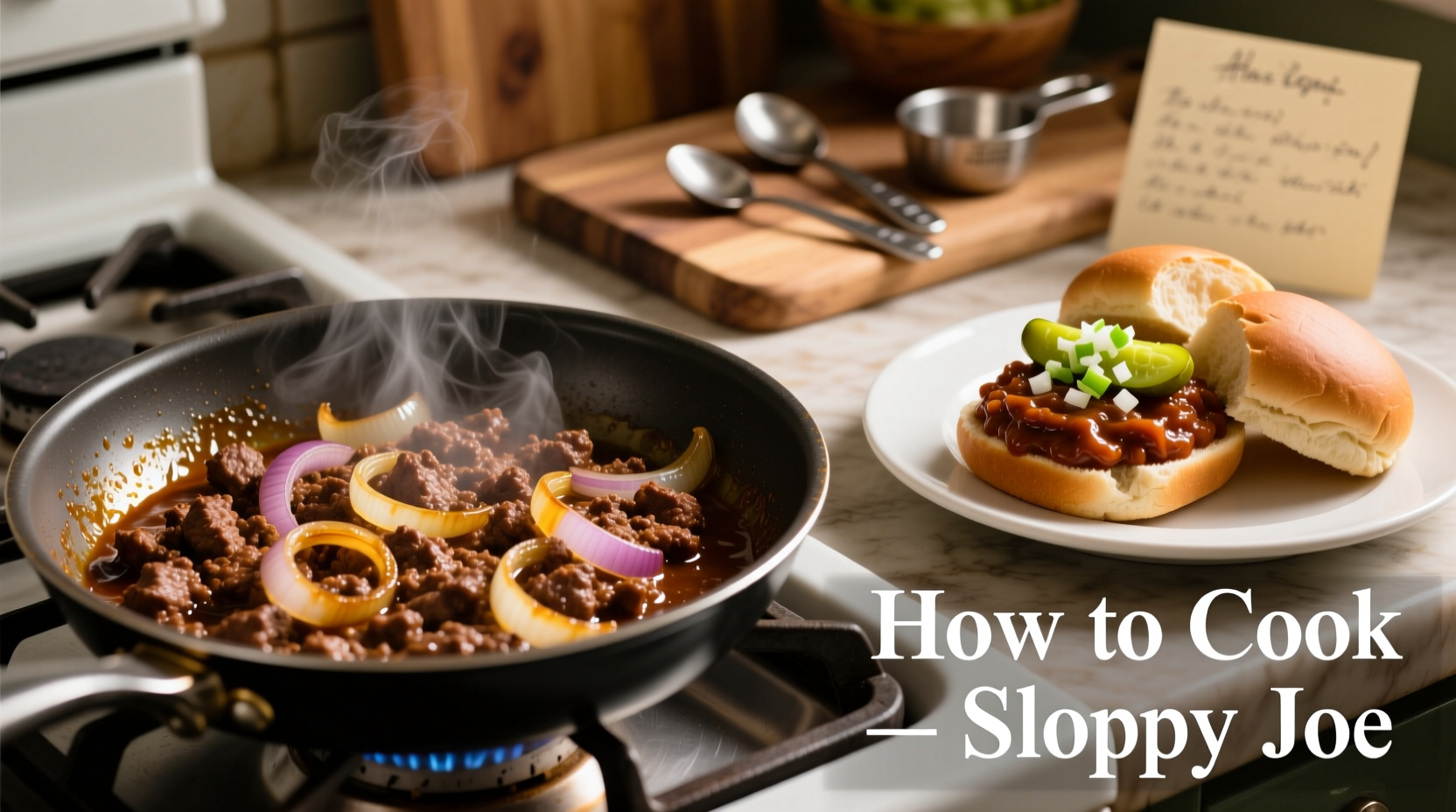Learn how to cook sloppy joe with this foolproof recipe that delivers perfectly balanced sweet, tangy, and savory flavors in just 30 minutes using simple pantry staples and ground beef.
Nothing beats the nostalgic comfort of a classic sloppy joe when you need a quick, satisfying meal. This American favorite combines tender ground beef with a rich tomato-based sauce that's both sweet and tangy, served on soft hamburger buns that soak up just the right amount of delicious messiness. Whether you're feeding a hungry family on a weeknight or preparing game day snacks, mastering the perfect sloppy joe technique ensures consistently flavorful results every time.
Essential Ingredients for Authentic Sloppy Joes
Creating the perfect sloppy joe starts with quality ingredients that work together to build layers of flavor. While recipes vary by region and family tradition, these core components form the foundation of a truly satisfying sandwich:
- 1 pound 80/20 ground beef (the fat content keeps it juicy)
- 1 medium yellow onion, finely diced (about 1 cup)
- 1 bell pepper, finely chopped (green or red)
- 3 tablespoons tomato paste (for concentrated flavor)
- 1 cup ketchup (the sweet base)
- 2 tablespoons brown sugar (for caramelized sweetness)
- 1 tablespoon apple cider vinegar (adds bright acidity)
- 1 teaspoon Worcestershire sauce (for umami depth)
- 1 teaspoon smoked paprika (adds subtle complexity)
- Salt and freshly ground black pepper to taste
- 8 soft hamburger buns (potato buns work best)

The Evolution of America's Favorite Messy Sandwich
Sloppy joes have a surprisingly rich history that explains their enduring popularity. Originally called "loose meat sandwiches," they emerged in the early 20th century as an economical way to stretch ground beef. The dish gained national recognition when a cook named Joe at Manning's Cafe in Sioux City, Iowa, began serving the messy creation in the 1930s. By the 1960s, sloppy joes had become a staple in American households, school cafeterias, and diners across the country.
| Time Period | Key Developments | Regional Variations |
|---|---|---|
| 1930s-1940s | "Loose meat sandwiches" gain popularity during Great Depression | Iowa/Midwest: Simple meat and onions |
| 1950s-1960s | Sweet tomato-based sauces become standard | Midwest: Addition of ketchup and brown sugar |
| 1970s-1980s | Commercial sloppy joe mixes hit supermarket shelves | South: Spicier versions with chili powder |
| 1990s-Present | Health-conscious adaptations emerge | West Coast: Gourmet versions with craft ingredients |
Step-by-Step Cooking Process
Follow these professional chef techniques to create perfectly textured, flavorful sloppy joes that aren't too watery or dry:
Preparation Phase: Setting Up for Success
Before you start cooking, properly prepare your ingredients. Finely dice the onion and bell pepper to 1/8-inch pieces—this ensures they cook evenly and integrate smoothly into the sauce. Measure all your sauce ingredients beforehand (ketchup, brown sugar, vinegar) so you can add them quickly during the cooking process without scrambling. Having everything ready prevents overcooking the meat while you're searching for ingredients.
Cooking the Meat: Building Flavor Foundations
Heat a large skillet or cast-iron pan over medium-high heat. Add the ground beef without breaking it up immediately—let it sear for 2-3 minutes to develop fond (those delicious browned bits) that adds flavor. Once nicely browned, break the meat into small crumbles using a spatula. Drain excess fat if desired, but retain about 1 tablespoon for flavor. Add the diced onions and bell peppers, cooking until softened (about 5 minutes).
Creating the Signature Sauce
Push the meat and vegetables to one side of the pan and add the tomato paste to the cleared space. Cook the paste for 1-2 minutes, stirring constantly—this "blooms" the tomato paste, deepening its flavor and removing any raw taste. Mix the paste with the meat mixture, then add all remaining sauce ingredients. Reduce heat to low and simmer uncovered for 15-20 minutes, stirring occasionally, until the mixture reaches your desired consistency.
Common Mistakes to Avoid
Even experienced cooks can make errors that compromise sloppy joe quality. Understanding these limitations ensures better results:
- Using lean ground beef: 90/10 or leaner beef creates dry, crumbly results. The 80/20 ratio provides necessary fat for moisture.
- Overmixing during browning: Constant stirring prevents proper browning. Let meat sear before breaking it up.
- Rushing the simmer time: The sauce needs time to reduce and develop complex flavors—don't skip the 15-minute simmer.
- Using cold buns: Toast buns lightly to create a moisture barrier that prevents sogginess.
Serving Suggestions and Creative Variations
While traditional sloppy joes are delicious on their own, these professional tips elevate them from basic to exceptional:
- Cheese upgrade: Place a slice of cheddar or provolone on the meat mixture during the last minute of cooking for perfectly melted cheese.
- Texture contrast: Top with thinly sliced dill pickles or coleslaw for refreshing crunch against the tender meat.
- Dietary adaptations: For a lower-carb option, serve over roasted sweet potato halves or in lettuce cups.
- Flavor boosters: Add a dash of hot sauce or smoked chipotle powder for extra depth and subtle heat.
Storage and Reheating Guidelines
Sloppy joe mixture actually improves in flavor after sitting, making it perfect for meal prep. Store cooled mixture in an airtight container in the refrigerator for up to 4 days or freeze for up to 3 months. When reheating, add a tablespoon of water or broth per cup of mixture to restore moisture. Gently warm on the stove over low heat, stirring occasionally—microwaving can make the meat tough if overheated.
Frequently Asked Questions
What's the ideal meat-to-sauce ratio for sloppy joes?
The perfect ratio is 1 pound of ground beef to 1 cup of sauce ingredients. This creates that signature sloppy texture without being too dry or soupy. If your mixture seems too wet after simmering, continue cooking uncovered for 5-10 minutes to reduce further.
Can I make sloppy joes ahead of time for a party?
Absolutely! Sloppy joes actually taste better when made 1-2 days in advance as the flavors meld together. Prepare the mixture completely, then store in the refrigerator. When ready to serve, gently reheat on the stove with a splash of water or broth to restore moisture. Keep the buns separate until serving to prevent sogginess.
How can I make my sloppy joes less messy to eat?
Toast your buns thoroughly to create a moisture barrier. Serve with a rimmed plate to catch drips, and consider slightly reducing the liquid content by simmering 5 minutes longer. For kids or casual settings, wrapping the sandwich in parchment paper halfway up helps contain the mess while still allowing the top to be visible.
What are the best bun options for sloppy joes?
Potato buns provide the ideal balance of softness and structure to hold up to the juicy filling without disintegrating. Brioche buns add a subtle sweetness that complements the sauce, while whole wheat buns offer a heartier option. Always toast the cut sides lightly to create a protective layer against sogginess.











 浙公网安备
33010002000092号
浙公网安备
33010002000092号 浙B2-20120091-4
浙B2-20120091-4